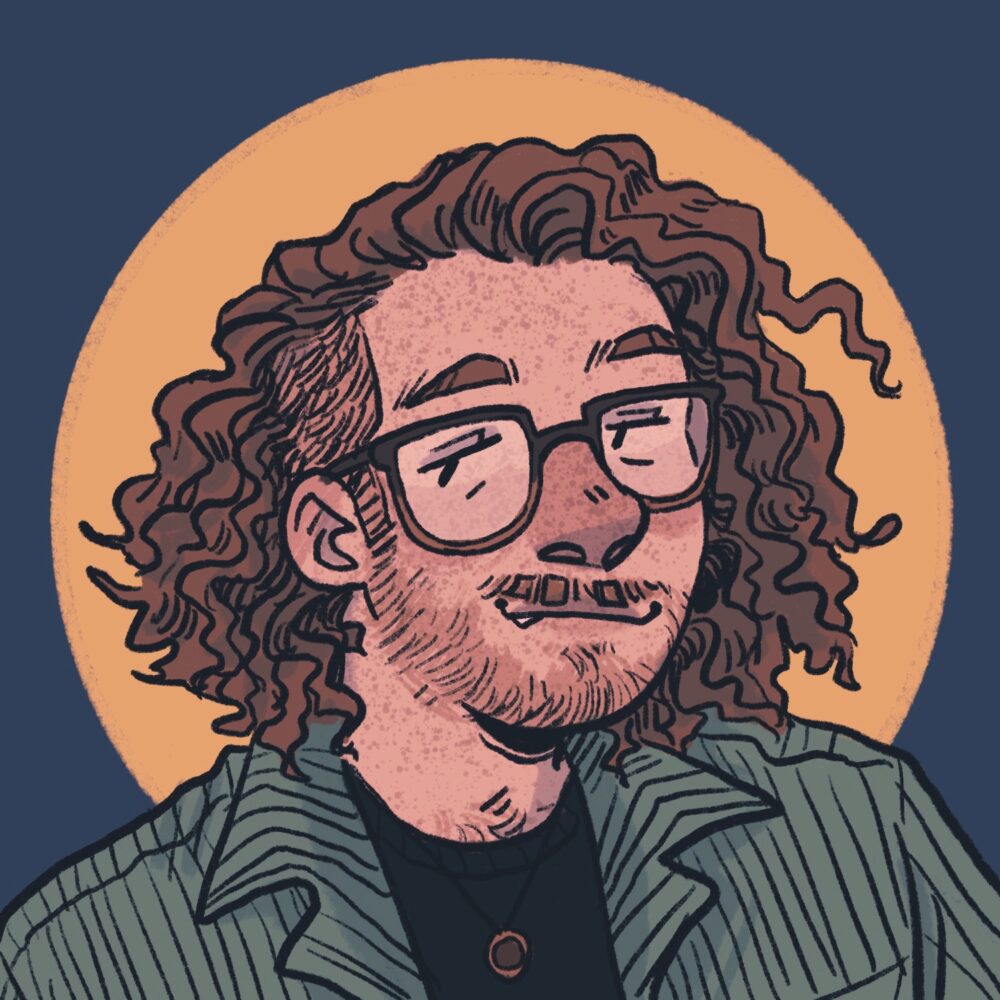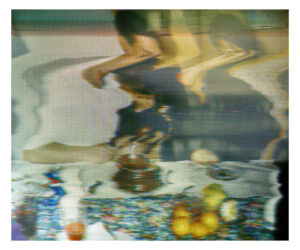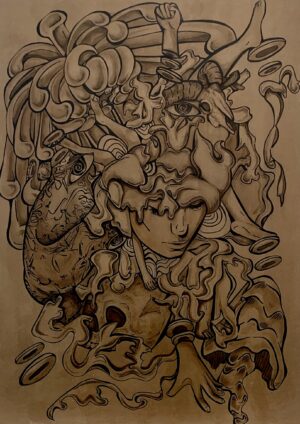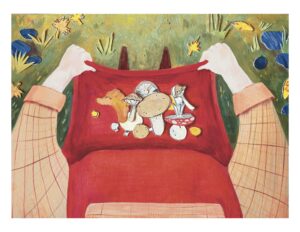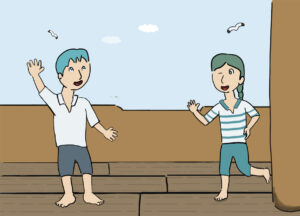Where-wolves? Here-Wolves!
Magnus van der Marel
Hello and welcome!
I’m glad you stopped by!
I’m a comic artist, illustrator, and storyteller sharing tales of the strange and unusual.
Care to take a look at the creatures and stories I have to offer?

Choose Your Path
Werewolf History
A research-based, ongoing excursion into the history and mythology of the werewolf.
Wolves have long been a staple figure in many mythologies across the world, and are often deeply misunderstood creatures. Stories of wolves and wolf-people have captivated people for thousands of years within recorded history, and have been stand-ins and metaphors for everything from human connection with nature, to the dangers of men, to the duality within oneself, to the devil, to puberty and sexuality. Werewolf mythos also spans all forms of storytelling such as fairy tales, movies, novels, myths, folktales, and even some historical accounts. Monsters and the ‘Other’ has been a major focus of my interest academically, artistically, and personally, and this project has been a natural culmination of those efforts.

Prehistory
Where else can you start but with the beginning of human storytelling? Human/animal hybrids have been present in human mythology across the globe for hundreds of thousands of years. Wolves, and their domesticated counterparts, are deeply intertwined with human development.

Medieval
Skipping ahead a few hundred thousand years, comes the tale of Bisclavaret, or the Lay of the Were-Wolf written by Marie of France in the 12th century. As a stark contrast to the other violent and dangerous werewolf mythos of the period, Biclavaret tells the story of a benevolent werewolf. He is betrayed by his wife, and cursed to be in wolf form until he is offered help by the King. I’ve spoiled the story a little here, but it’s a good read.

Early Film
Curiously, werewolf mythos does not have a consistent history of “rules” and origins like the similar figure of the vampire does. Most of what constitutes modern understanding of werewolf stories comes quite recently through early film in the 1920’s through the 40’s. Of course the most notable is Universal Pictures The Wolf Man (1941), which popularized many werewolf attributes into popular knowledge. However, and earlier film, Werewolf of London (1935) was the origin of lycanthropy being transferred through biting!

80’s Film
Ah, the 80’s… By that time, advancements in Special Effects and makeup FX allowed for filmmakers and creatives to really push the horror of transformation. Most notably Rick Baker’s award-winning work in An American Werewolf in London (1981) which set a new standard for effects and was the first film to ever win an academy award for best makeup. Rob Bottin, who went on to do the effects for John Carpenter’s The Thing (1982), also did groundbreaking work in The Howling (1981).
There’s also the Teen Wolf movie if that’s more your style.

90’s Kids
Alongside the more adult horror iterations of werewolves, the creature also had its chance with kids media, particularly in the age of mass-produced book series that introduced many a 90’s kid to the thrills and chills of scary stories (alongside several classic TV anthology shows). Werewolves have since become a staple of the Halloween monster hall of fame and a favourite of seasonal lawn décor makers everywhere.



fictitious medical treatments, and a fairy tale of my own making.
Sharpstone Park
Starting from a character exercise way back in first year, Sharpstone Park is a drama/romance/horror longform comic project I’ve worked on over the last four years. It explores themes of duality, transformation, identity, queerness, and relationships, with a disabled trans man protagonist and a varied supporting cast.
Centered in a fictionalized PNW park filled with monsters, magic, and the unexplained, Sharpstone follows Jasper Lowell, a park ranger with a hairy secret, as he reconnects with an old friend Lio. The two unearth questions and powers long-buried, which threaten to shake the foundations of their friendship and the park itself.










Middle-Grade GN Dummy
A younger-audience story focusing on my protagonist Jasper and his sister Kate as kids.
Intended as an exploration of the characters and in keeping a consistent tone, but changing the audience.




Varulv Kjæreste

Short comic of a queer interpretation of a Norwegian werewolf legend. Being born in Norway, I’ve always had an interest in the mythology of the region, and I was very lucky to find a story that fit my interests perfectly.


